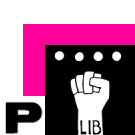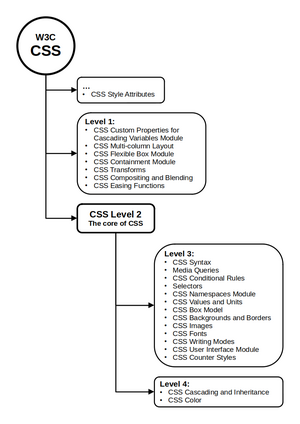User:Zuhui/SI26/Weekly log: Difference between revisions
| Line 26: | Line 26: | ||
* [https://www.w3.org/Style/CSS/ see more of CSS drafts] | * [https://www.w3.org/Style/CSS/ see more of CSS drafts] | ||
CSS1, released in 1996 | in CSS1, released in 1996, element positioning was mainly focused on using basic styling features such as fonts, colors, text properties, margins, and padding. <code>table</code> based layouts were mostly used but it was challenging to achieve precise layout, because it was inefficient and difficult to maintain (especially for its accessibility and responsiveness). | ||
nautrally, there were increasing needs for more flexible and intuitive layout techniques for webpage, therefore <code>position</code> was developed. | |||
so the <code>position</code> property we use today was first introduced in CSS2 in 1998 May, while there have been some improvements since then, the core concept and behavior were pretty much established in CSS2. The position properties such as <code>static</code>, <code>relative</code>, <code>absolute</code>, and <code>fixed</code>, have remained almsot unchanged to this day. except for <code>sticky</code>, which was introduced with CSS3 in 2012, the fundamental principles and usage were almost fully established with CSS2. | so the <code>position</code> property we use today was first introduced in CSS2 in 1998 May, while there have been some improvements since then, the core concept and behavior were pretty much established in CSS2. The position properties such as <code>static</code>, <code>relative</code>, <code>absolute</code>, and <code>fixed</code>, have remained almsot unchanged to this day. except for <code>sticky</code>, which was introduced with CSS3 in 2012, the fundamental principles and usage were almost fully established with CSS2. | ||
| Line 33: | Line 34: | ||
'''↘︎ write how elements are positioned and function within a web environment as if they exist in physical space''' | '''↘︎ write how elements are positioned and function within a web environment as if they exist in physical space''' | ||
Static: | '''Static:'''<br>- works like a basic rule of physics, like gravity, flowing from top to bottom | ||
Relative: | '''Relative:''' | ||
Absolute: | '''Absolute:''' | ||
Fixed: | '''Fixed:''' | ||
Sticky: | '''Sticky:''' | ||
===where do they came from?=== | |||
'''↘︎ how much is it borrowing from other design practices?''' | |||
'''Static:''' | |||
'''Relative:''' | |||
'''Absolute:''' | |||
'''Fixed:'''<br>- navigators<br>- advertisement banners | |||
'''Sticky:''' | |||
Revision as of 21:13, 19 January 2025
WEEK 0
intro to SI26 Declarative companions
↘︎ Annotation
afternoon exercise
↘︎ declaration exercise on Claudio's prompt
WEEK 1
afternoon exercise - on 'position' property
Position
↘︎ bit of history
- CSS1, W3C 17 Dec 1996
- CSS2 press release 1998
- CSS2, W3C
- CSS position 3, editor's draft
- Wikipedia CSS
- see more of CSS drafts
in CSS1, released in 1996, element positioning was mainly focused on using basic styling features such as fonts, colors, text properties, margins, and padding. table based layouts were mostly used but it was challenging to achieve precise layout, because it was inefficient and difficult to maintain (especially for its accessibility and responsiveness).
nautrally, there were increasing needs for more flexible and intuitive layout techniques for webpage, therefore position was developed.
so the position property we use today was first introduced in CSS2 in 1998 May, while there have been some improvements since then, the core concept and behavior were pretty much established in CSS2. The position properties such as static, relative, absolute, and fixed, have remained almsot unchanged to this day. except for sticky, which was introduced with CSS3 in 2012, the fundamental principles and usage were almost fully established with CSS2.
materiality
↘︎ write how elements are positioned and function within a web environment as if they exist in physical space
Static:
- works like a basic rule of physics, like gravity, flowing from top to bottom
Relative:
Absolute:
Fixed:
Sticky:
where do they came from?
↘︎ how much is it borrowing from other design practices?
Static:
Relative:
Absolute:
Fixed:
- navigators
- advertisement banners
Sticky:

